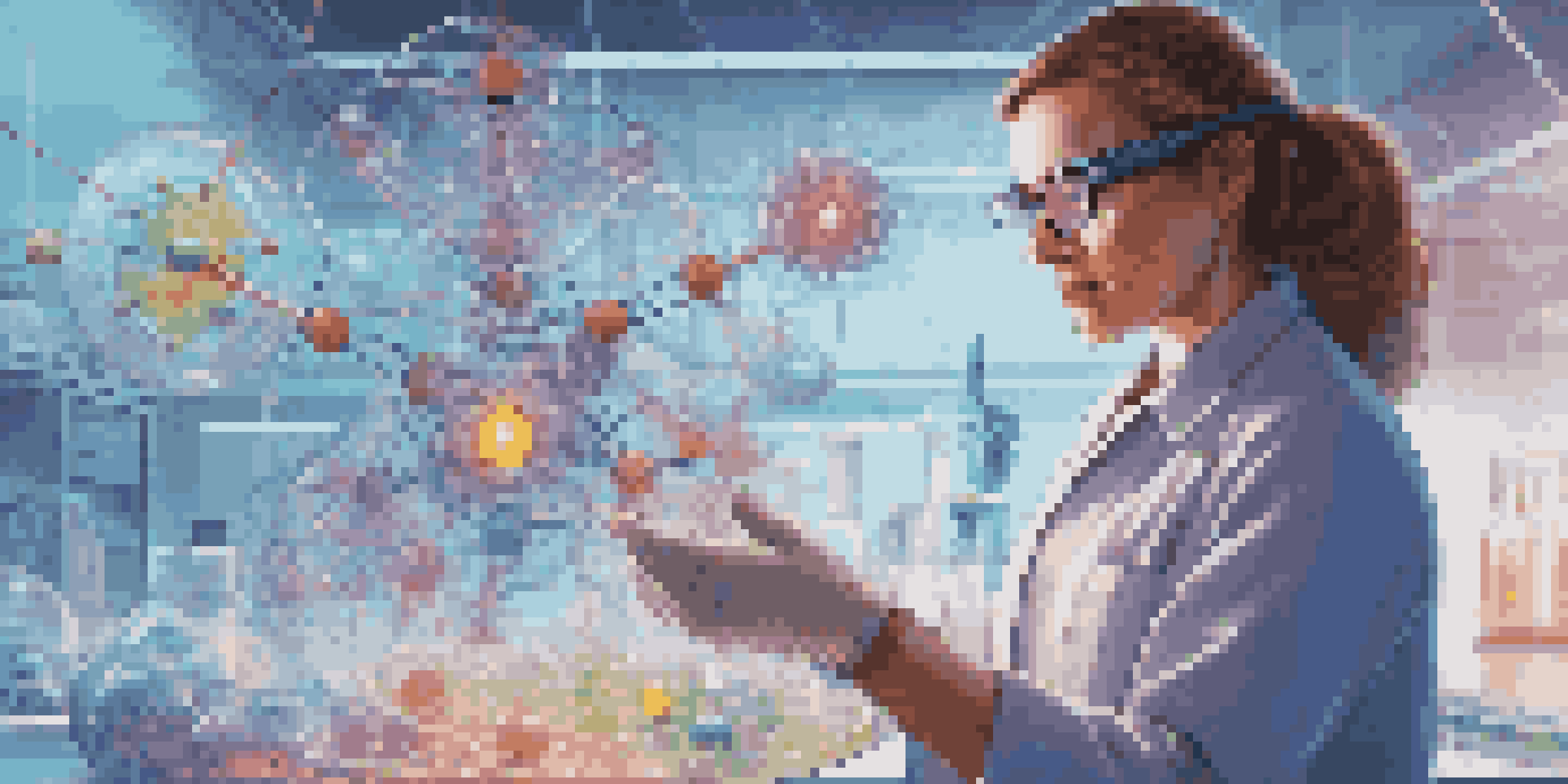The Role of AR in Scientific Research and Data Visualization

Understanding Augmented Reality in Science
Augmented Reality (AR) overlays digital information onto the real world, enhancing our perception of reality. By superimposing data visuals on physical objects, AR makes complex scientific concepts more accessible and engaging. This technology can transform how researchers interact with their findings, making it easier to visualize relationships and patterns that may be difficult to grasp otherwise.
Enhancing Data Visualization with AR
Data visualization is crucial in scientific research, as it helps to communicate intricate information clearly and effectively. AR takes this a step further by allowing scientists to see data in three dimensions, which can reveal insights that flat graphs or charts may miss. For instance, researchers studying molecular structures can visualize and manipulate these models in real-time, fostering a deeper understanding of their work.
AR Enhances Data Visualization
Augmented Reality allows scientists to visualize complex data in three dimensions, revealing insights that traditional graphs may overlook.
AR Applications in Field Research
Field research often involves complex data collection in dynamic environments, and AR can simplify this process. For example, biologists studying ecosystems can use AR glasses to overlay species data directly onto their surroundings, allowing for real-time analysis. This immersive experience enhances data accuracy and helps researchers make informed decisions on the spot.
Training and Education Through AR
Training new scientists and researchers can be a challenge, but AR offers innovative solutions. Interactive AR experiences can simulate lab environments, enabling learners to practice techniques without the risks associated with real experiments. This hands-on approach not only solidifies understanding but also boosts confidence, paving the way for more effective learning.
AR Aids Field Research Efficiency
AR technology enables biologists to overlay data onto real-world environments, facilitating immediate analysis and informed decision-making.
Collaborative Research and AR
Collaboration is essential in scientific research, and AR facilitates this by bridging geographical gaps. Researchers from different locations can share AR environments, enabling them to explore data and findings together in real-time. This shared experience can lead to more productive discussions and a richer exchange of ideas.
Challenges and Limitations of AR in Science
While AR presents exciting opportunities, it also comes with challenges that must be addressed. Technical limitations, such as the need for specialized equipment and software, can hinder widespread adoption. Additionally, researchers must ensure that AR applications are user-friendly and accessible to maximize their potential impact.
AR Transforms Scientific Collaboration
Augmented Reality bridges geographical gaps, allowing researchers to share immersive environments and explore data collectively in real-time.
Future Directions of AR in Scientific Research
The future of AR in scientific research looks promising, with continual advancements in technology enhancing its capabilities. As AR becomes more integrated into research workflows, we can expect to see even more innovative applications, such as real-time data analysis and predictive modeling. This evolution will likely transform how scientists approach their work, leading to breakthroughs we can only imagine today.
Conclusion: The AR Revolution in Science
In summary, AR is revolutionizing scientific research and data visualization by making complex information more understandable. By enhancing collaboration, education, and visualization, this technology is paving the way for future scientific advancements. As we continue to explore the potential of AR, its impact on the scientific community will undoubtedly grow, shaping the future of research.